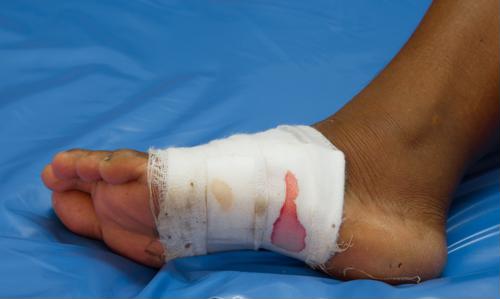How do you know if your wound is chronic? The severity of your injury, as well as complications that cause significant delays in healing, are common indicators. There are also certain kinds of wounds that often end up high on the chronic scale.
Here are the three most common types of chronic wounds:
 Infectious wounds, surgical sites and ulcers are among the most common chronic wounds.
Infectious wounds, surgical sites and ulcers are among the most common chronic wounds.1. Infectious wounds
When infection causes significant delays in healing, the wound often becomes chronic. According to Wound Care Centers, typical signs of chronic infectious wounds include bad odors, pus drainage, dead tissue, inflammation, redness and pain.
2. Surgical wounds
Surgical incisions are prone to complications if post-operative wound care fails to promote healing or prevents bacteria from reaching the affected area. DeKalb Medical advised watching out for signs of distress in the days following surgery, which may include redness or streaking around the surgical site, pain or throbbing, pus, unpleasant odor and fever.
3. Ulcers
Ulcers are the most common type of chronic wound, according to Wound Care Centers. There are several different kinds of chronic ulcers, including:
Arterial ulcers: Often caused by hypertension, plugging or clotting, arterial ulcers occur due to disrupted blood flow to the affected area. They often develop on legs and feet and can cause pain when the patient’s legs are active or elevated.
Diabetic ulcers: Patients with diabetes often develop foot ulcers, especially when neuropathy causes a loss of feeling in their lower extremities. Here’s how to identify a diabetic foot ulcer.
Pressure ulcers: Also known as bed sores, pressure ulcers develop when constant weight and friction on a specific area for a long duration of time cause the skin to tear. This chronic ulcer is especially common on the back, ankles and feet, according to Wound Care Centers. Symptoms include redness, itching, blistering, swelling and discoloration in the affected area.
Traumatic ulcers: DeKalb Medical noted that severe trauma or injury, such as wounds caused by a car accident, can cause tissue loss as well as body part and organ damage that leads to a chronic wound.
Venous ulcers: When vein valves fail to transport blood properly, venous ulcers can develop where the blood pools and causes swelling. They typically develop on the legs, especially between the ankle and knee. Venous ulcers are often irregular in shape and can cause severe pain.
All chronic wounds require careful management to prevent further delays in healing. Talk to your doctor about iPAK by Innovative Outcomes to get the wound care products your treatment requires delivered straight to your front door.





